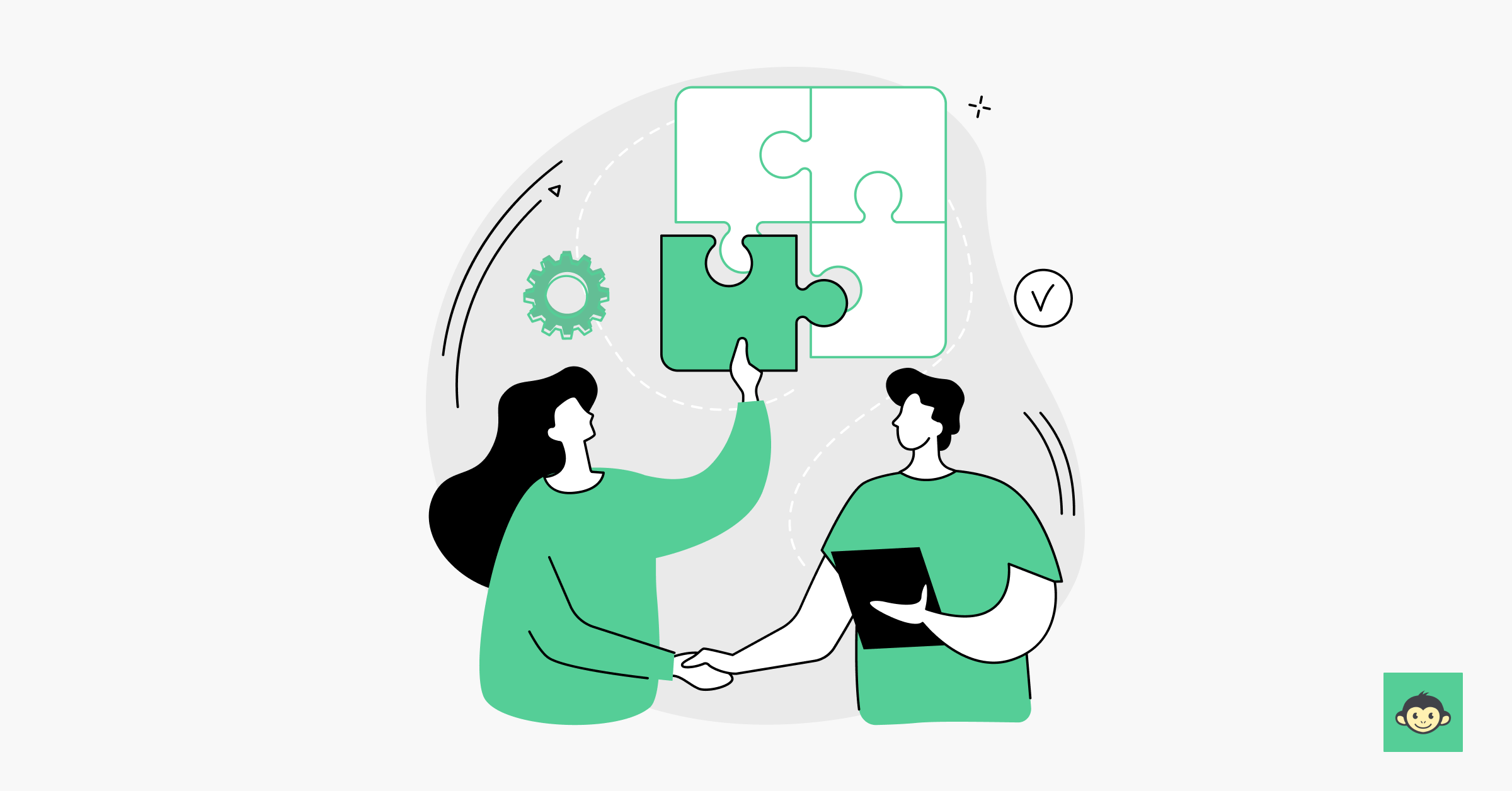What is an employee development and training program?

What if I told you that employee development and training programs could be like a game show?
Picture this: your boss walks into the room with a microphone and starts asking you questions about the company's values and mission. Get it right, and you will win a prize! It's like "Who Wants to Be a Millionaire?" but for corporate America.
Or how about this: instead of the same old boring PowerPoint presentation, your management hires a professional magician to come in and teach you about teamwork and communication.
Abracadabra! Suddenly, learning about interpersonal skills becomes a lot more interesting.
Okay, okay, I know what you're thinking. "But why should we even bother with employee development and training programs?" Well, the answer is simple: Happy employees make for a happy company. When your team feels valued and invested, they're more likely to stick around and work harder.
And let's be real, who doesn't love a good team-building game or magic trick?
So, let's dive in and explore everything there is to know about training and development programs.
Table of contents:-
- What is training and employee development?
- What are the benefits of employee training and development?
- How to create an employee development and training program?
- What sets exceptional employee development apart?
- What types of employee training and development exist?
- What is the role of HR in training and development?
- Common issues and challenges in developing employees
- Legal issues to look out for in employee development and training program
- Tips for implementing employee development
- Conclusion
What is training and employee development?

Training and employee development are crucial aspects of any successful company. These programs are designed to improve employee skills, knowledge, and performance in their respective roles, making them better equipped to handle any challenges that may come their way.
Employee training provides employees with specific skills and knowledge required to perform their jobs efficiently. This type of training can be delivered through a variety of methods, including classroom training, online courses, workshops, and hands-on learning.
Companies tend to follow effective employee training and employee development programs for a variety of reasons. First and foremost, it helps to improve work-life balance and employee performance, which leads to increased productivity, higher quality work, and better customer service.
By providing employees with the necessary tools and resources, they can work more effectively and efficiently, leading to better outcomes for the company.
Secondly, these programs help to create a positive work environment that fosters growth and development. Employees who feel that their employer values their professional development are more likely to stay with the company, resulting in reduced employee turnover rates.
Let me give you an example of why training and employee development are crucial. Imagine you're a new employee at a fast-food restaurant.
You may know how to cook a burger, but do you know how to handle an angry customer? Do you know how to handle cash, credit cards, or refunds? Without proper technical training, you may feel overwhelmed and unsure of how to handle these situations, leading to a negative experience for you and the customer.
However, if you were trained in customer service, cash handling, and conflict resolution, you would feel much more confident in your abilities and would be better equipped to handle any situation that comes your way.
This would result in a positive experience for both you and the customer, leading to increased customer loyalty and revenue for the company.
So yes, companies can improve performance, reduce turnover rates, and create a positive work environment by investing in employee growth and development.
What are the benefits of employee training and development?

Employee training and development are crucial investments for any organization. They help employees acquire new soft skills, knowledge, and abilities to perform their jobs more effectively and efficiently.
Besides improving employee performance, employee training programs have several other benefits. Let's take a closer look:
1. Increased employee satisfaction
Investing in employee training and development programs shows that a company values its employees. Employees feel more fulfilled and satisfied with their jobs by providing opportunities for growth and development, leading to increased motivation and employee engagement.
Employees who feel valued and appreciated are more likely to stay with the company, leading to reduced turnover rates.
2. Improved employee performance
The primary goal of employee training and development is to improve employee skills and knowledge, leading to better job performance. When employees have the necessary tools and resources to perform their jobs, they are more efficient and effective in their roles.
Improved performance leads to better outcomes for the company, including increased productivity, better quality work, and increased customer satisfaction.
3. Reduced employee turnover
High employee turnover rates can be costly for companies. Hiring and training new employees takes time and resources, leading to increased expenses. By investing in employee training and development programs, companies can reduce employee turnover rates by providing employees with opportunities for growth and development.
Employees who feel valued and appreciated are more likely to stay with the company long-term, leading to reduced turnover rates and increased stability.
4. Improved customer satisfaction
When employees are well-trained and knowledgeable, they can provide better customer service. Customers who receive excellent service are more likely to return and recommend the company to others. Investing in employee training and development programs can lead to increased customer satisfaction, resulting in increased revenue for the company.
5. Increased innovation and creativity
Employee training and development programs can help employees think outside the box and come up with innovative solutions to problems. When employees have the skills and knowledge to perform their jobs effectively, they are more confident in their abilities and more likely to think creatively.
Encouraging employees to think creatively and innovate can lead to new ideas and processes that improve the company's performance and bottom line.
6. Better adaptability to change
In today's fast-paced business environment, companies need to be able to adapt quickly to changes. Employee training and development programs can help employees develop the skills and knowledge necessary to adapt to changes in the workplace.
This can include changes in technology, processes, or even company culture. Employees who are adaptable can help companies stay ahead of the curve and remain competitive in their industries.
How to create an employee development and training program?

So, now that we know the benefits of employee training and development, you might be wondering, "How can I create an effective employee development and training program?"
Well, it's not rocket science, but it does require some planning and effort. Here are some tips to get you started:
Identify the needs of your employees
Before creating a training and development program, you need to identify the needs of your employees. This can be done through surveys, employee feedback sessions, or even casual conversations. Find out what skills and knowledge your employees need to perform their jobs more effectively, and then design training programs that meet those needs.
Set goals and objectives
Once you've identified the needs of your employees, set goals and objectives for your training program. What do you want your employees to achieve through the training? What are the specific outcomes you're looking for? Setting clear goals and objectives will help you measure the effectiveness of your training program and make any necessary adjustments.
Determine the training methods
You can use various training methods, including online courses, classroom training, on-the-job training, and coaching. Determine the best training method based on your employees' needs and your training program's goals. Mix and match different methods for a more comprehensive approach.
Develop training materials
Once you've determined the training methods, develop training materials that are engaging and informative. Use a mix of formats such as videos, infographics, and interactive activities to keep your employees interested and excited about the training.
Schedule the training
Set the training sessions at a time that is convenient for your employees. Avoid scheduling them during busy times or when employees are likely distracted. Ensure you communicate the training schedule well in advance so employees can plan accordingly.
Measure the effectiveness
After the training program is complete, measure its effectiveness. Did your employees gain the necessary skills and knowledge? Did they achieve the goals and objectives you set? Use feedback sessions, surveys, and performance evaluations to measure the effectiveness of your training program.
As the famous philosopher Yogi Berra once said, "If you don't know where you're going, you'll end up somewhere else." So, let's make sure we know where we're going with our employee development and training programs.
What sets exceptional employee development apart?

Okay, we know how to create effective employee development programs. But what sets exceptional employee development apart from just a good one? Let's get into them!
Customization
One size doesn't fit all when it comes to employee development and safety training. Exceptional programs take the time to understand the unique needs of their employees and customize the training to meet those needs. This not only helps to ensure that employees gain the necessary skills and knowledge, but it also shows that the company values and invests in its employees.
Continuous learning
Exceptional employee development programs don't just stop at the initial compliance training. They recognize that learning is a continuous process and provide ongoing opportunities for employee learning. This can include additional formal training sessions, mentoring program throughout, and even job rotations.
Supportive environment
Creating a supportive environment is crucial for employee development and training. Exceptional programs provide a safe space for employees to ask questions, make mistakes, and learn from their experiences. This helps to build confidence and encourages employees to take risks and try new things.
Collaboration
Exceptional employee development programs encourage collaboration and teamwork. They recognize that employees can learn from each other and provide opportunities for employees to work together on projects and share their experiences.
And as the great Winston Churchill once said, "Continuous effort - not strength or intelligence - is the key to unlocking our potential." So, let's continue to put in the effort to unlock the potential of your employees.
What types of employee training and development exist?

Alright, now that we know what sets exceptional employee development apart, let's dive into the different types of training and development programs that exist. Trust us, there's more to it than just lectures and slide shows.
On-the-job training
This is the most common type of employee training, and it's exactly what it sounds like. On-the-job training involves learning by doing, including job shadowing, apprenticeships, and cross-training.
Formal classroom training
Formal classroom training involves more traditional classroom-style learning with an instructor. This can be in-person or online and typically includes lectures, presentations, and group activities.
E-Learning
E-learning is becoming increasingly popular, especially in the age of remote work. It involves online learning modules that employees can complete on their own time and at their own pace.
Coaching and mentoring
Coaching and mentoring programs involve pairing employees with more experienced team members who can provide guidance, support, and employee feedback.
Conferences and workshops
Attending conferences and workshops is a great way for employees to learn about new industry trends, ideas, and best practices. These events often include networking opportunities and can be a great way to build relationships with others in the industry.
Job rotations
Job rotations involve moving employees to different roles or departments within the company to gain exposure to different aspects of the business. This can help employees develop new skills and better understand how the company operates as a whole.
By incorporating a variety of training methods, companies can help employees' career development, ultimately leading to a more engaged and productive workforce.
What is the role of HR in training and development?

So, we've talked about the different types of employee training and development, but who's responsible for making it happen? Well, that's where HR comes in.
HR plays a crucial role in employee training and development. They are responsible for designing, implementing, and managing training programs that help employees develop the skills they need to succeed.
But, HR's job doesn't stop there. They also need to ensure that training programs align with the company's overall goals and objectives. This means that HR needs to work closely with other departments, like marketing and finance, to make sure that training programs are focused on the skills and knowledge that will help the company succeed.
HR also needs to track and measure the effectiveness of training programs. This involves collecting feedback from employees, monitoring performance metrics, and analyzing data to identify areas where training programs can be improved.
And let's not forget about the logistical side of things. HR is responsible for scheduling training sessions, booking venues, and making sure that employees have the resources they need to participate in training programs.
All in all, HR has a lot on their plate when it comes to employee training and development. But, if done right, it can lead to a more engaged and productive workforce, which ultimately benefits everyone.
Common issues and challenges in developing employees

While employee development is essential, it's not always smooth sailing. There are common issues and challenges that organizations may face when developing their employees. Here are a few examples:
Lack of resources: Developing employees takes time, money, and effort. Organizations may not have the resources to dedicate to employee development programs, which can lead to limited opportunities for growth and development.
Resistance to change: Some employees may be resistant to change and may not see the value in developing new skills or taking on new challenges. It's important for organizations to communicate the benefits of employee development and get buy-in from employees.
Inadequate training: Training is one thing, but effective training is another. Employees need to be provided with training that is relevant, engaging, and aligned with their job responsibilities.
Lack of follow-up: Employee development doesn't end after the training session. Organizations must follow up with employees to ensure they apply what they have learned and provide ongoing support and feedback.
Generational differences: Different generations may have different learning styles and preferences. Organizations need to ensure that their employee development programs are inclusive and meet the needs of all employees.
Employee turnover: Developing employees takes time and effort, so it can be frustrating when employees leave shortly after completing a training program. Organizations need to focus on retaining their employees by providing ongoing opportunities for growth and development.
These are just a few of the common issues and challenges organizations may face when developing their employees. But with proper planning, communication, and follow-up, organizations can overcome these challenges and create a continuous learning and development culture.
Legal issues to look out for in employee development and training program

It's essential to keep in mind that there may also be legal issues to consider when developing employees. For example, discrimination or bias in training can lead to legal issues for organizations.
It's important to ensure that all employees have equal growth and development opportunities, regardless of gender, race, or other protected characteristics.
Additionally, organizations need to ensure that their employee development programs comply with all relevant laws and regulations. So, make sure to brush up on legal requirements and stay compliant while developing your employees!
Tips for implementing employee development

Now are you ready to tackle employee development head-on? Here are some tips to get you started:
Start with a plan: Define your goals and objectives, and determine what skills and competencies your employees need to develop to achieve them.
Get employee buy-in: Communicate the benefits of employee development to your team, and get them involved in the process. Ask for their input on what they need and how they prefer to learn.
Offer a variety of learning opportunities: Different employees learn in different ways, so offer a variety of learning opportunities, such as online courses, workshops, mentoring, and coaching.
Provide ongoing support and feedback: Employee development doesn't end after the training session. Provide ongoing support and feedback to help employees apply what they have learned.
Measure success: Define metrics to measure the success of your employee development program. Use these metrics to track progress and make adjustments as needed.
Celebrate successes: Don't forget to celebrate the successes of your employees! Recognize their achievements and encourage them to continue learning and growing.
Conclusion
By investing in your employees' growth and development, you can boost their job satisfaction, employee engagement, and productivity. However, developing employees is not without its challenges. HR professionals must be aware of common issues and legal considerations when implementing these programs.
Luckily, there are resources available to help companies get started with employee development and training.
Employee engagement survey platforms like us (that offers various surveys including pulse surveys, manager effectiveness surveys, eNPS, employee life cycle surveys, and employee engagement surveys) can provide people leaders like you with valuable insights into employees' needs and preferences, helping organizations tailor their development programs to their team's unique needs.
With CultureMonkey, companies can gather feedback and take action to improve their employees' skills, knowledge, and satisfaction. By investing in employee development and training, companies can set themselves apart as employers of choice and build a strong, motivated, and skilled workforce that drives their success.



